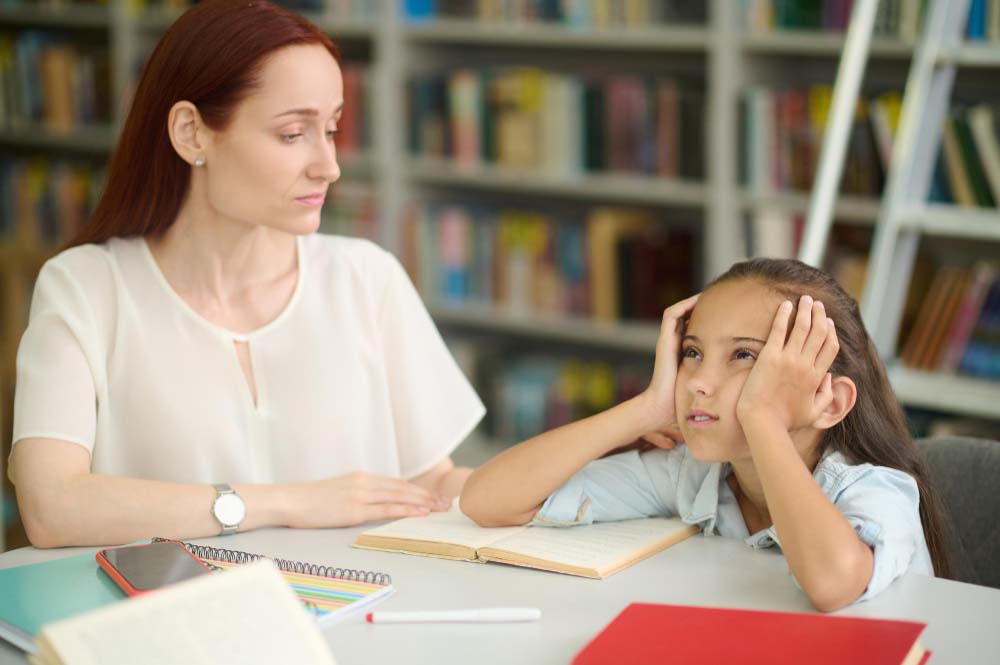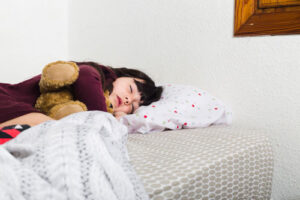Introduction
Separation anxiety in school can be challenging for children and their parents. However, one often overlooked yet powerful strategy to mitigate this problem is maintaining the correct posture.
We’ll delve into the impact of posture on their physical and mental well-being, academic performance, and social interactions. So, let’s delve into the correct posture and discover how it can positively influence a child’s school experience.

Understanding Separation Anxiety in School
Before we delve into the connection between posture and separation anxiety, we must grasp the concept of separation anxiety itself. Separation anxiety is a typical emotional response experienced by children when separated from their parents or caregivers, particularly during the school years.
This can lead to distress and hinder their ability to focus on school-related tasks, leading to academic and social challenges.
The Impact of Correct Posture on Physical and Mental Well-being
Maintaining correct posture has far-reaching effects on a child’s physical and mental well-being. Proper posture ensures the spine’s alignment, supporting the muscles and ligaments that protect the spinal cord. A straight spine allows for the optimal flow of nerve impulses, enhancing the child’s overall nervous system function.
Also, good posture promotes better blood circulation, improving oxygen and nutrient supply to the brain. This, in turn, enhances cognitive function, concentration, and memory retention—essential aspects of a child’s successful academic journey.
Creating a Safe and Supportive School Environment
Creating a safe and supportive school environment is paramount in fostering a conducive space for children experiencing separation anxiety. Such an environment not only encourages a sense of security but also cultivates a positive attitude toward learning and social interactions.
A key element in establishing this atmosphere is the presence of caring and attentive teachers and staff who actively prioritize the emotional well-being of every student.
In a safe and supportive school environment, educators play a crucial role in building strong relationships with their students. They create an open-door policy that allows children to express their concerns, fears, and anxieties freely.
By fostering a non-judgmental and compassionate atmosphere, teachers can help alleviate separation anxiety by providing individual attention and reassurance to children struggling with the fear of being separated from their caregivers.
Moreover, implementing proactive measures such as anti-bullying policies, conflict resolution programs, and emotional support resources can significantly contribute to a secure and nurturing school environment.
By promoting kindness, empathy, and inclusivity, schools can foster a culture of acceptance and understanding, allowing children to feel emotionally safe and accepted by their peers and teachers.
Physical aspects of the school environment also play a crucial role in creating a sense of security. Designing welcoming and child-friendly classrooms, common areas, and play spaces can help children feel more comfortable and relaxed in the school setting.
Access to quiet spaces where children can retreat if they feel overwhelmed can also be instrumental in reducing the stress associated with separation anxiety.
By prioritizing emotional well-being, fostering positive relationships, and ensuring a physically welcoming atmosphere, schools can create an environment where children feel safe, supported, and empowered to overcome their separation anxiety and thrive academically and socially.
Posture and Academic Performance
The benefits of correct posture extend to a child’s academic performance. Children who maintain proper posture are likelier to be attentive and engaged in class. Slouching or hunching over, on the other hand, can lead to lethargy, discomfort, and a decreased attention span.

Correct posture also positively impacts handwriting and fine motor skills. When a child sits with an aligned spine, they have better control over their hand movements, leading to neater and more legible handwriting. Improved handwriting can boost confidence in academic abilities, which can, in turn, reduce anxiety related to school tasks and assessments.
The Psychological Effects of Correct Posture on Separation Anxiety
Believe it or not, posture can influence a child’s emotional state and ability to cope with separation anxiety. Studies have shown that maintaining an open and upright posture can increase confidence, self-esteem, and assertiveness. On the contrary, poor posture can lead to feelings of vulnerability and insecurity.
Encouraging children to adopt confident postures can positively impact their emotional well-being, making them better equipped to handle the challenges of separation anxiety. When a child stands tall with their shoulders back, they exude self-assurance, making engaging with peers and teachers easier to forge meaningful connections.
Improving Social Interactions with Correct Posture
Social interactions are crucial in a child’s school experience, and posture can significantly influence how others perceive them. A child with correct posture appears more approachable and open, making it easier for their peers to initiate conversations and form friendships.
Moreover, good posture can help children communicate more effectively. When they stand or sit confidently, they are more likely to express themselves clearly and assertively, reducing the chances of miscommunication or misunderstandings.
Incorporating Posture-Enhancing Activities into Daily Routines
Now that we understand the benefits of correct posture for children with separation anxiety, let’s explore some practical strategies to promote good posture throughout their day.
Encouraging regular physical activities, providing ergonomic seating arrangements in schools, and setting posture reminders are effective ways to instill the importance of posture in children’s minds.
Conclusion
Correct posture is a simple yet powerful strategy to support children dealing with separation anxiety in school. Good posture offers many benefits, from boosting physical and mental well-being to enhancing academic performance and social interactions.
By incorporating posture-enhancing activities into their daily routines, parents and educators can help children develop the confidence and resilience to overcome separation anxiety and thrive in their academic journey.
So, let’s stand tall and embrace the positive impact of correct posture on our children’s lives.






